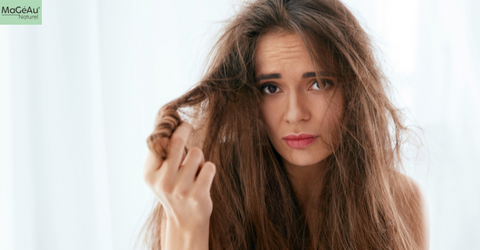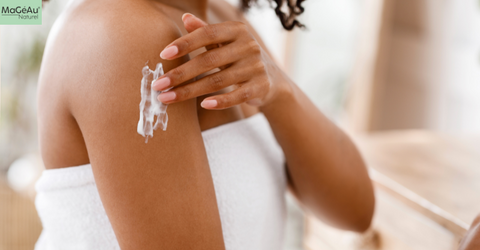Most of us trust our shampoo to keep our hair clean, fresh, and healthy. But what if the very product you rely on is secretly causing harm? While shampoos promise shine, volume, and nourishment, many contain ingredients that do the opposite. If you’ve been struggling with dry, frizzy, or weak hair despite using expensive products, your shampoo might be the culprit.
Let’s uncover the hidden dangers of your shampoo and how they might be damaging your hair.
1. Dehydration: The Silent Hair Killer
Hydration is key to healthy hair. Your hair needs moisture to stay soft, smooth, and manageable. Unfortunately, many shampoos strip away natural oils, leaving your hair dry and brittle.
How Does Shampoo Dehydrate Hair?
- Harsh Cleansers: Many shampoos contain strong detergents that over-cleanse your scalp, removing not just dirt but also essential natural oils.
- Alcohol Content: Some shampoos include drying alcohols that evaporate moisture from your hair.
- Frequent Washing: If your shampoo is too harsh and you wash daily, your hair doesn’t get a chance to replenish its natural moisture.
Signs Your Shampoo is Dehydrating Your Hair:
- Hair feels rough and straw-like
- Increased frizz and flyaways
- Split ends and breakage
- Difficulty in styling due to excessive dryness
2. The Hidden Dangers of Parabens & Paraffin
Parabens and paraffin are commonly found in shampoos, but most people don’t know why they can be harmful.
Why Are Parabens Used?
Parabens are preservatives that prevent bacteria growth in beauty products. Sounds good, right? The problem is that parabens have been linked to hormonal imbalances. They can mimic estrogen, potentially leading to hair thinning and even hair loss over time.
What About Paraffin?
Paraffin is a type of mineral oil that’s sometimes used in hair care. While it creates a temporary shine, it coats your hair in a way that prevents moisture from penetrating the strands. Over time, this can lead to dryness, product buildup, and weak, lifeless hair.
Signs Your Shampoo Contains Harmful Preservatives:
- Unexplained hair thinning or shedding
- Itchy or irritated scalp
- Hair feeling coated or waxy
- Lack of volume and bounce
3. The Problem with Sulfates & Silicones
If your shampoo lathers up into a rich, foamy wash, it likely contains sulfates. If it promises smoothness and shine, silicones might be the reason. However, both ingredients come with problems.
Why Sulfates Are Bad for Your Hair
Sulfates (like Sodium Lauryl Sulfate - SLS) are strong detergents used to remove dirt and oil. The problem? They’re too effective. They strip away natural oils, leading to:
- Dry, itchy scalp
- Increased frizz
- Weakened, brittle hair strands
If your hair feels squeaky clean after washing, your shampoo might be too harsh.
The Hidden Issue with Silicones
Silicones coat your hair to give it a silky, shiny appearance. However, they can:
- Cause buildup on the scalp and hair, making it greasy over time
- Weigh hair down, reducing natural volume
- Prevent moisture from penetrating, leading to hidden dehydration
Look out for ingredients like:
- Grape Seed Oil
- Coco Glucoside
- Magnesium Chloride
- Cetearyl Olivate
- Sorbitan Olivate
4. How to Choose the Right Shampoo (The Solution!)
Now that you know what could be damaging your hair, let’s talk about how to fix it!
What to Look for in a Shampoo:
✅ Sulphate & Paraben free cleansers – Look for mild cleansers like aloe vera-based surfactants and is free from unnecessary preservatives.
✅ Silicone-free options – If you have fine or thinning hair, avoid heavy silicones.
✅ Hydrating ingredients – Look for shampoos with aloe vera, jojoba oil, magnesium, or vitamin E.
✅ 100% Natural products - Look for a shampoo with 100% Natural formula.
Best Practices for Healthy Hair:
✔ Wash Less Often – Shampooing every day can strip natural oils. Finding the right balance is key, and it often depends on factors like your hair type, activity level, and personal preference.
✔ Use a Hydrating Conditioner – Always follow up with a conditioner to lock in moisture.
✔ Try a Clarifying Wash Once a Month – This helps remove any silicone buildup without over-drying. Buildup from styling products, oils, and pollutants can weigh your hair down and make it look dull. Once a month, use a clarifying shampoo to deep-clean your scalp and strands. Apply it to wet hair and let it sit for a minute before rinsing. Follow up with a hydrating conditioner to maintain moisture balance.
✔ Avoid Hot Water – Washing your hair with lukewarm or cool water helps retain moisture.
✔ Deep Condition Weekly – A hydrating hair mask can help counteract any dryness.
Final Rinse: Protecting Your Hair from Harmful Shampoos
Your shampoo might be doing more harm than good, but the good news is that you can take control of your hair health. Avoiding harmful ingredients like sulfates, parabens, paraffin, and silicones can make a huge difference. Opt for a gentle, hydrating shampoo that nourishes your hair instead of stripping it.
If you’ve been dealing with dryness, hair thinning, or frizz, it’s time to check your shampoo label and switch to a healthier alternative. Your hair will thank you!





Comments (0)
There are no comments for this article. Be the first one to leave a message!